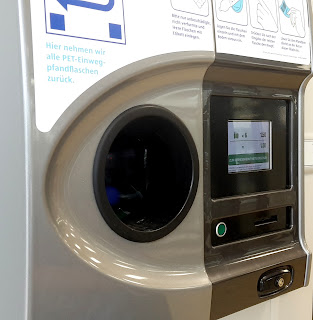German Beverages - More than just Beer

If you think of a German drink, it is highly likely that the first beverage that comes to your mind is beer – Weizenbier, Pils, Radler, you name, we have it! In comparison with other countries, the average German seems to consume 106 litres of beer per head per year, thus ranking second after the Czech Republic (143 litres per head!!!). Such statistics always astonish me, especially when thinking about our unwritten “ Kein Bier vor Vier” rule and my own lack of beer consumption... Anyway – the stereotype of Germany as the beer country exists and I will not try to convince you that this well-known fact is untrue; the approximate number of 7500 different beers speaks for itself. Yet, I want to let you know about some other beverages that seem to be rather German, starting with the most obvious one: water . Before I moved to the UK, I did not really think that there would be anything to say about this most normal, daily-life drink. But, believe it or not, there is a lot to say abou...



